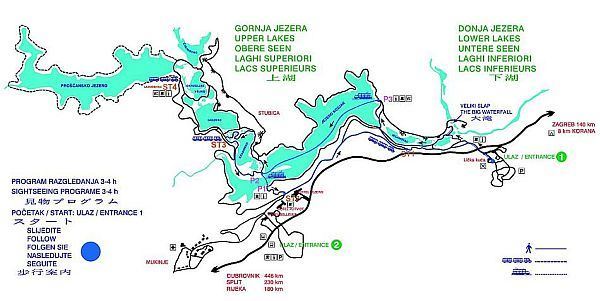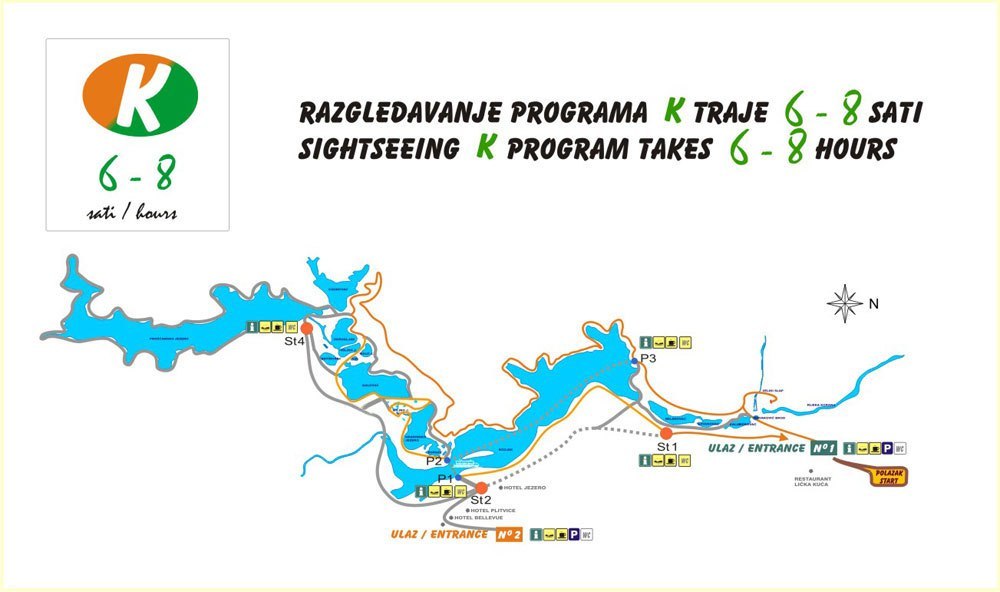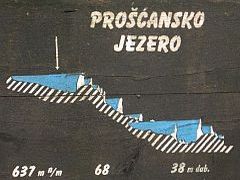
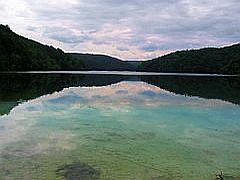
Cache is near bus stop station ST3 - Labudovac, around Proscansko jezero. Recommended for families with children and older people: you can start your tour of this place and you will walk down the hill until the end.

Plitvice Lakes National Park
Geography and geology
The lakes are situated on the eponymous Plitvice plateau, between the mountains of Licka Plješevica (Gornja Plješevica peak 1,640 m), Mala Kapela (Seliški Vrh peak at 1,280 m) and Medvedak (884 m). The sixteen lakes are separated into an upper and lower cluster formed by runoff from the mountains, descending from an altitude of 636 m to 503 m over a distance of some eight km, aligned in a south-north direction. The lakes collectively cover an area of about two km2, with the water exiting from the lowest lake to form the Korana River.
The Plitvice Lakes lie in a basin of karstic rock, mainly dolomite and limestone, which has given rise to their most distinctive feature. The lakes are separated by natural dams of travertine, which is deposited by the action of moss, algae and bacteria. The encrusted plants and bacteria accumulate on top of each other, forming travertine barriers which grow at the rate of about 1 cm per year.
The lakes are renowned for their distinctive colours, ranging from azure to green, grey or blue. The colours change constantly depending on the quantity of minerals or organisms in the water and the angle of sunlight.
The lakes are divided into the 12 Upper Lakes (Gornja jezera) and the four Lower Lakes (Donja jezera).
Flora and fauna
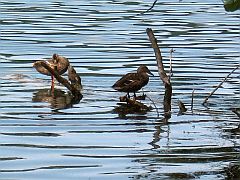
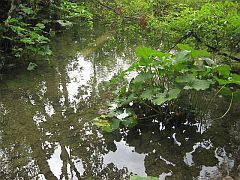
The Plitvice Lakes national park is heavily forested, mainly with beech, spruce, and fir trees, and features a mixture of Alpine and Mediterranean vegetation. It has a notably wide variety of plant communities, due to its range of microclimates, differing soils and varying levels of altitude.
The area is also home to an extremely wide variety of animal and bird species. Rare fauna such as the European brown bear, wolf, eagle, owl, lynx, wild cat and capercaillie can be found there, along with many more common species. At least 126 species of birds have been recorded there, of which 70 have been recorded as breeding there.
History
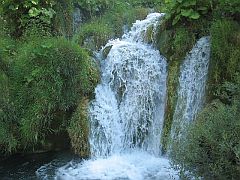
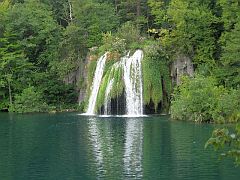
Humans have inhabited the Plitvice Lakes area for thousands of years. It has been settled in turn by Illyrians, Thracians, Celts, Japods, Romans, Avars, Slavs and Turks. In 1528 the area fell to the Ottomans before being retaken by the Austrian Empire 150 years later. The Austrians subsequently incorporated it into their Military Frontier and, in addition to the native Croats who already inhabited the region, Serbs who had fled Ottoman repression settled there.[citation needed]
The Plitvice Lakes had become a major tourist attraction in the late 19th century. The first hotel was built there in 1896, and as early as 1893 it already had a conservation committee - the predecessor of today's national park authority. In 1949 the communist government of Yugoslavia nationalized the lakes and made them a national park. The park was inscribed on the UNESCO World Heritage List in 1979 in recognition of its "outstanding natural beauty, and the undisturbed production of travertine (tuff) through chemical and biological action".
The park soon became one of Yugoslavia's most popular tourist attractions. However, in March 1991 it became the scene of the Plitvice Lakes incident - the first armed confrontation of the Croatian War of Independence that resulted in fatalities. The park was held by forces of the Republic of Serbian Krajina during the conflict and suffered some damage in the process, with hotels and other facilities being used as barracks. At auto-camp Grabovac there were civilian deaths (three children) from the Yugoslav Army shell in September 1991. It was retaken by the Croatian Army in August 1995 during Operation Storm, which ended the Croatian war.
The Plitvice Lakes are today one of Croatia's biggest tourist attractions. In 2000, the national park was expanded by a further 102 km2.
http://en.wikipedia.org/wiki/Plitvice_Lakes_National_Park

Map Plitvice Lakes
